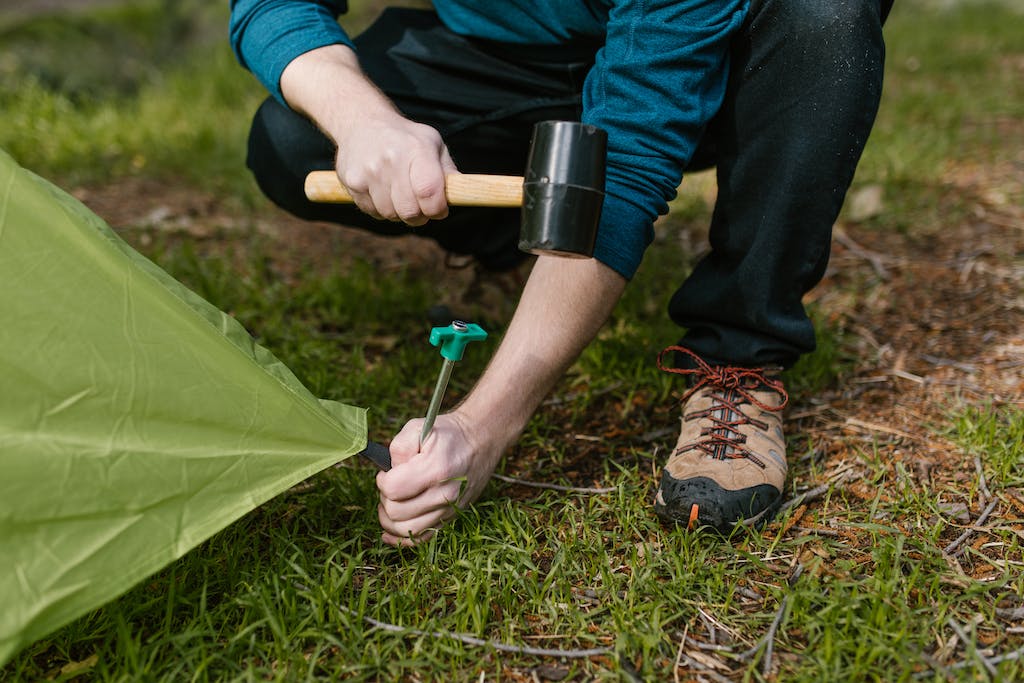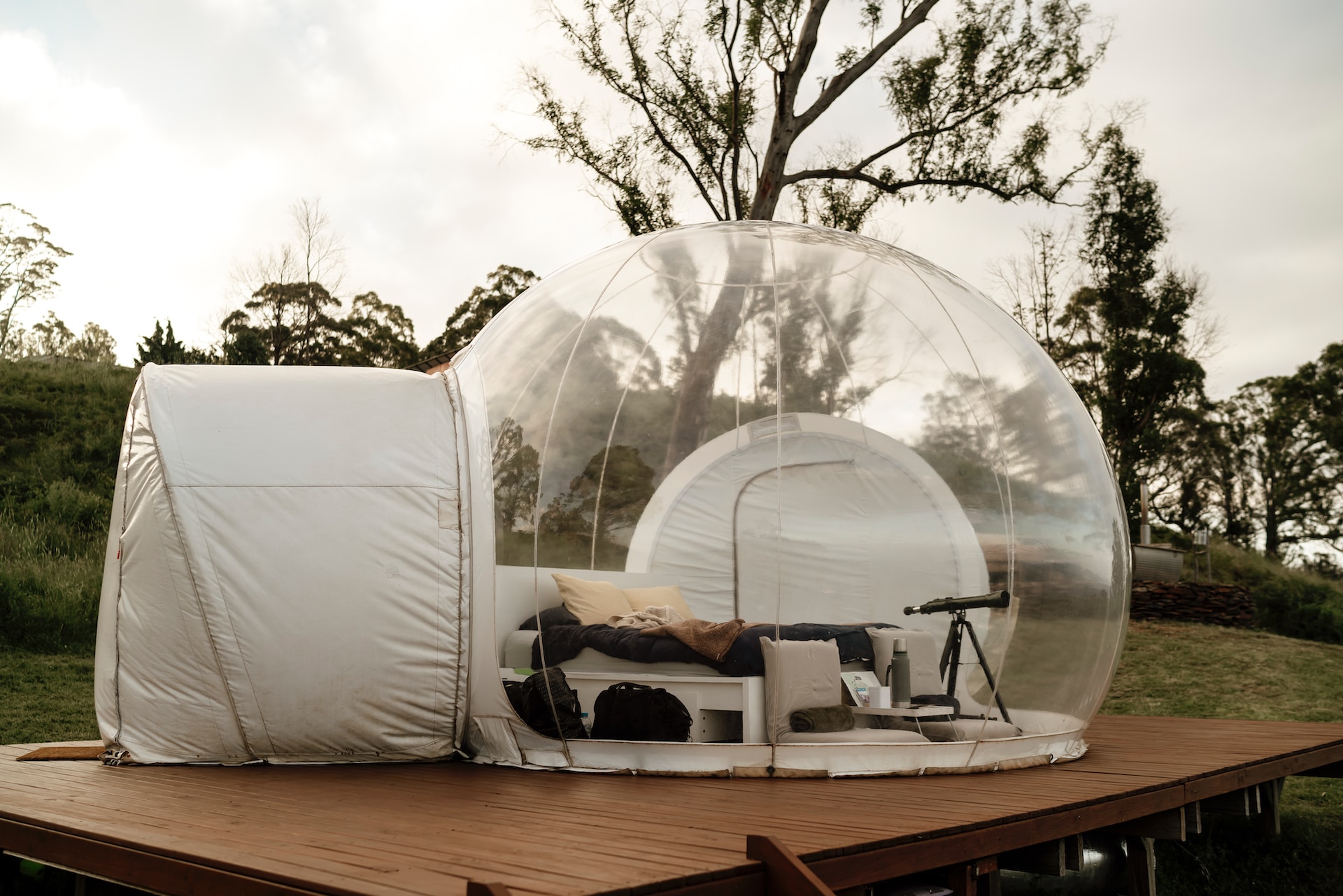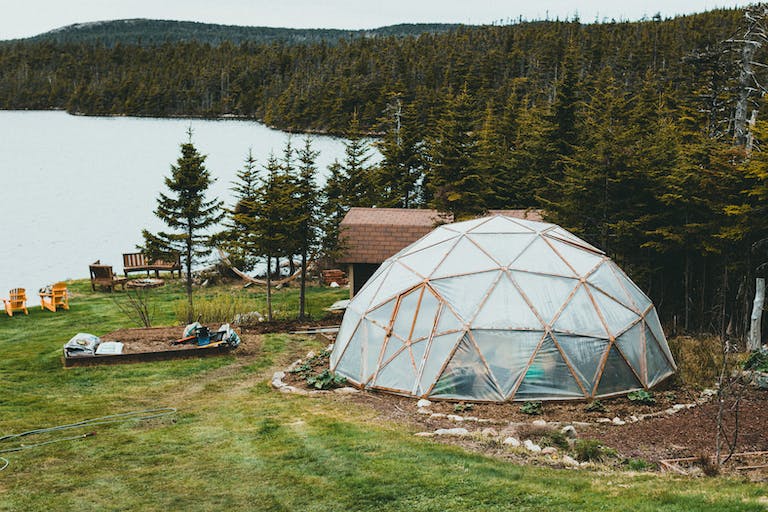10 Tips for Buying the Best Glamping Tents
Choosing the right tent for camping is crucial for a successful outdoor adventure. A good tent provides shelter, protection from the elements, and a comfortable space to sleep and relax. With so many options available on the market, it can be overwhelming to find the perfect tent for your needs.
In this article, we will discuss the key factors to consider when choosing a tent, including size, materials, ventilation, waterproofing, set-up and take-down ease, weight and portability, warranty, additional features, reviews and recommendations, and budget.
Consider the Size of the Tent
One of the most important factors to consider when choosing a tent is its size. The size of the tent should be determined by the number of people who will be using it and the amount of gear that needs to be stored inside.
When selecting a tent based on the number of people and gear storage needs, here are some examples to consider:
- 1-2 People: For solo trips or couples, a 2-person tent is usually sufficient. This size is compact and easy to carry, but space is limited. A typical 2-person tent might measure around 30-35 square feet, good for sleeping and minimal gear storage. If you’re planning to store backpacks or hiking boots inside the tent, or if one of the campers is above average height, consider upsizing to a 3-person tent for more comfort.
- 3-4 People: A 4-person tent is ideal for a small family or a group of friends. These tents often range from 55 to 70 square feet, which should provide enough room for sleeping and some personal items. However, if the group requires space for larger items like multiple large backpacks, or if you’re bringing along a dog, it may be more comfortable to opt for a 5-person tent or even a 6-person model to ensure there’s ample room for everyone and everything.
- 5-6 People: For larger groups or families, a 6-person tent is a common choice. These tents typically provide about 90 to 120 square feet of space. This should be enough room for sleeping bags and personal items. If the group includes individuals who are significantly tall or if the plan is to spend more time inside the tent during the day, a tent with a higher center height is beneficial. Some 6-person tents offer standing room with heights exceeding 6 feet.
- 7+ People: When camping with a large group, large family, or just wanting extra space, there are tents designed for 8 people and up that can exceed 130 square feet. These tents often come with room dividers and multiple doors to create separate living and sleeping areas. They can have enough headroom for most individuals to stand up straight, with center heights sometimes reaching 6 and a half feet or more. These larger tents are ideal for extended camping trips where comfort and space are priorities, but they can be bulkier and more challenging to set up.
It’s important to note that these size recommendations are based on providing enough room for sleeping side by side without much spare room.
While the basic size guidelines may suffice for those content with a cozy, intimate setting for side-by-side slumber, those seeking a more exquisite glamping setup may opt for larger tent dimensions.
If you prefer separate sleeping areas or want extra space for gear storage, you may need a larger tent. Additionally, consider the height of the tent. If you or your camping companions are tall, look for a tent with enough headroom to stand up straight.

Look for Durable Materials
Opting for a tent that can withstand the harshest weather conditions and endure numerous camping trips is essential. A wise approach would be to look for tents that are constructed using high-quality materials that are well-known for their durability.
Among the commonly used materials in tent production are nylon, polyester, and canvas. Nylon, for example, is not only lightweight but also highly resistant to tearing, which is why it is widely favored when it comes to backpacking tents.
On the other hand, polyester is also lightweight and durable, although it may not offer the same level of tear resistance as nylon does.
For those seeking a tent that can truly withstand the test of time and extreme weather conditions, canvas tents are an excellent choice. Although they may be heavy, their remarkable durability makes them ideal for long-term camping adventures or when facing particularly challenging weather conditions.
Choose a Tent with Good Ventilation
Good airflow is key for a nice camping trip. You need a tent with good ventilation so fresh air can move in and stop moisture build-up, which keeps away mold and dampness. Look for tents with mesh panels or windows you can open for fresh air.
Tents designed with mesh panels are excellent for increasing airflow. These panels act as breathable windows, allowing air to circulate while keeping bugs and other outdoor pests outside.
Moreover, tents that offer the option to open additional windows provide an even greater opportunity for creating a cross breeze, which can swiftly clear out stale air and draw in the fresh.
The number and placement of vents are also essential factors to consider. Vents positioned higher up in the tent’s design are especially useful for letting warm air escape. Since warm air naturally rises, these upper vents can act as exhausts, releasing the heat and making the tent’s interior more comfortable for sleeping or relaxing. Conversely, vents located near the bottom of the tent’s walls play a critical role in admitting cooler air from outside.
Lastly, pick tents with a rainfly you can take off or open partly. A rainfly is an additional waterproof layer designed to protect the tent from rain and dew. Tents with a detachable or partially openable rainfly offer the best of both worlds.
On dry and hot nights, removing or opening the rainfly can greatly enhance ventilation by increasing the area through which air can flow. This not only helps keep the tent cool but also adds to the pleasure of camping by allowing you to gaze at the stars or feel a gentle breeze as you drift off to sleep.
Check the Waterproofing
One of the most important features to consider when choosing a tent is its waterproofing capabilities.
You want a tent that will help you stay dry and cozy, even when it’s raining hard or everything outside is soaked. To make sure you pick a tent that’s good at keeping water out, look for one that has a high waterproof rating and has been put together in a way that seals off all the seams.
To understand how waterproof a tent might be, take a close look at what it’s made from and how it’s been built. Good tents usually use materials like nylon or polyester, and they have a special waterproof layer or treatment added to them. This stops water from getting through the fabric.
Another thing to check is whether the tent has something called a bathtub-style floor. This design means that the bottom part of the tent comes up a bit on the sides before it turns into the walls. It’s like how a bathtub wraps up at the edges. This is a great feature because it helps keep water from sneaking in under the walls of the tent. If the floor just lay flat on the ground without rising up at the edges, water could easily slip in at the bottom, which could make for a wet and unpleasant camping experience.
Look for Easy Set-Up and Take-Down

Ease of set-up and take-down is another important factor to consider when choosing a tent. A tent that is difficult to set up or take down can be frustrating and time-consuming, especially if you are camping alone or in bad weather conditions.
Look for tents with a simple and intuitive design that can be set up quickly and easily. And it is possible for glamping.
Glamping tents are often larger, more elaborate, and come with more features than standard camping tents. They are designed to offer spacious interiors, typically including areas for sleeping, lounging, and sometimes even separated rooms for added privacy. Given their size and complexity, it could be assumed that glamping tents might be more difficult to set up. However, manufacturers have ingeniously designed these tents to be user-friendly, knowing that the target market may not have technical camping experience and expects convenience.
Many high-end glamping tents incorporate features such as pre-attached poles or an all-in-one inflation system for air-supported structures, which significantly reduce the time and effort required for set-up. With aluminum poles, these tents maintain a balance between structural integrity and portability—important for glampers who want sturdy but not overly cumbersome setups. For those looking for a more budget-friendly option, fiberglass poles are common; however, the trade-off is potentially reduced stability and durability.
Color-coding is another feature that simplifies the setup process. By matching pole colors to corresponding sleeve or clip colors on the tent fabric, glampers can quickly identify which components go where, which is especially helpful when trying to set up a large tent.
Moreover, glamping tents often include additional amenities such as built-in lighting, plush bedding, and even electrical outlets. While these features do not directly impact the physical set-up of the tent, they do align with the ease-of-use philosophy that underpins the glamping experience.
Consider the Weight and Portability
The weight and portability of a tent are important considerations, especially if you plan to backpack or hike to your camping destination. A lightweight and compact tent will be easier to carry and transport. Look for tents made from lightweight materials and with a compact design.
When choosing a tent, consider the packed size and weight. Look for tents that can be easily packed into a backpack or carried in a compact carrying case. Additionally, consider the ease of transportation, such as whether the tent comes with a carrying bag or straps for easy attachment to a backpack.
Choose a Tent with a Good Warranty
A good warranty is an important factor to consider when choosing a tent. A tent with a good warranty provides peace of mind and ensures that you are protected in case of any defects or issues with the tent. Look for tents with a warranty that covers manufacturing defects and offers a reasonable period of coverage.
When choosing a tent, read the warranty terms and conditions carefully. Look for warranties that cover the tent’s materials, construction, and workmanship. Additionally, consider the reputation of the company and their customer service in case you need to make a warranty claim.
Look for Additional Features
There are several additional features to consider when choosing a tent. These features can enhance your camping experience and provide added convenience and comfort. Some examples of additional features include:
- Multiple doors: Tents with multiple doors allow for easy entry and exit, especially if you are sharing the tent with others.
- Vestibules: Vestibules are covered areas outside the tent that provide extra storage space for gear or muddy shoes.
- Gear lofts: Gear lofts are mesh pockets or shelves inside the tent that provide storage space for small items such as flashlights or phones.
- Electrical cord access: Tents with electrical cord access allow you to bring power inside the tent for charging devices or using electrical appliances.
- Reflective guy lines: Reflective guy lines are ropes or cords that are visible in low light conditions, reducing the risk of tripping over them.
Read Reviews and Recommendations
Before purchasing a tent, it is important to read reviews and recommendations from other campers. Reading reviews can provide valuable insights into the quality, performance, and durability of a tent. Look for reviews from reputable sources or fellow campers who have used the tent in similar conditions.
When reading reviews, pay attention to common themes or issues mentioned by multiple reviewers. Look for reviews that provide detailed information about the tent’s features, performance, and any potential drawbacks. Additionally, consider recommendations from friends or family members who have experience with camping and can provide firsthand insights.
Set a Budget and Stick to It
Setting a budget is an important step when purchasing a tent. Tents come in a wide range of prices, so it is important to determine how much you are willing to spend before starting your search. Setting a budget will help you narrow down your options and prevent overspending.
When setting a budget, consider the features and quality you are looking for in a tent. Higher-priced tents often offer more durable materials, better waterproofing, and additional features. However, there are also budget-friendly options available that provide good quality and performance for the price.
Choosing the right tent for camping is essential for a comfortable and enjoyable outdoor experience. Take the time to research and compare different options before making a decision. With the right tent, you can create lasting memories on your camping adventures.




